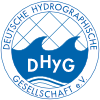Deep learning-based detection of marine images and the effect of data-driven influences
Throughout recent years convolutional neural networks have been applied for various image detection tasks. Training data thereby plays an important role for the performance of those models. Not only the amount of images is crucial but also the number of annotations, classes as well as image dimensions. In view of changing underwater environments, the study of benthic communities is increasingly important especially in the Southern Ocean as they provide a key link for ecosystem shifts. This study concentrates on the automatic detection and classification of benthic species using deep learning. It could be shown that glass sponges, brittle stars and soft corals could successfully be detected even on few input data and highly biased class distributions in varying underwater scenes. Further analyses considering datadriven influences show significant performance declines regarding the training on single objects and classes per image and the evaluation on large image dimensions.
deep learning | automatic detection | underwater imagery | benthos Deep | Learning


